Seilerstaette
Harmolodic Substi
Tillman Kaiser
March 12 – May 9, 2020
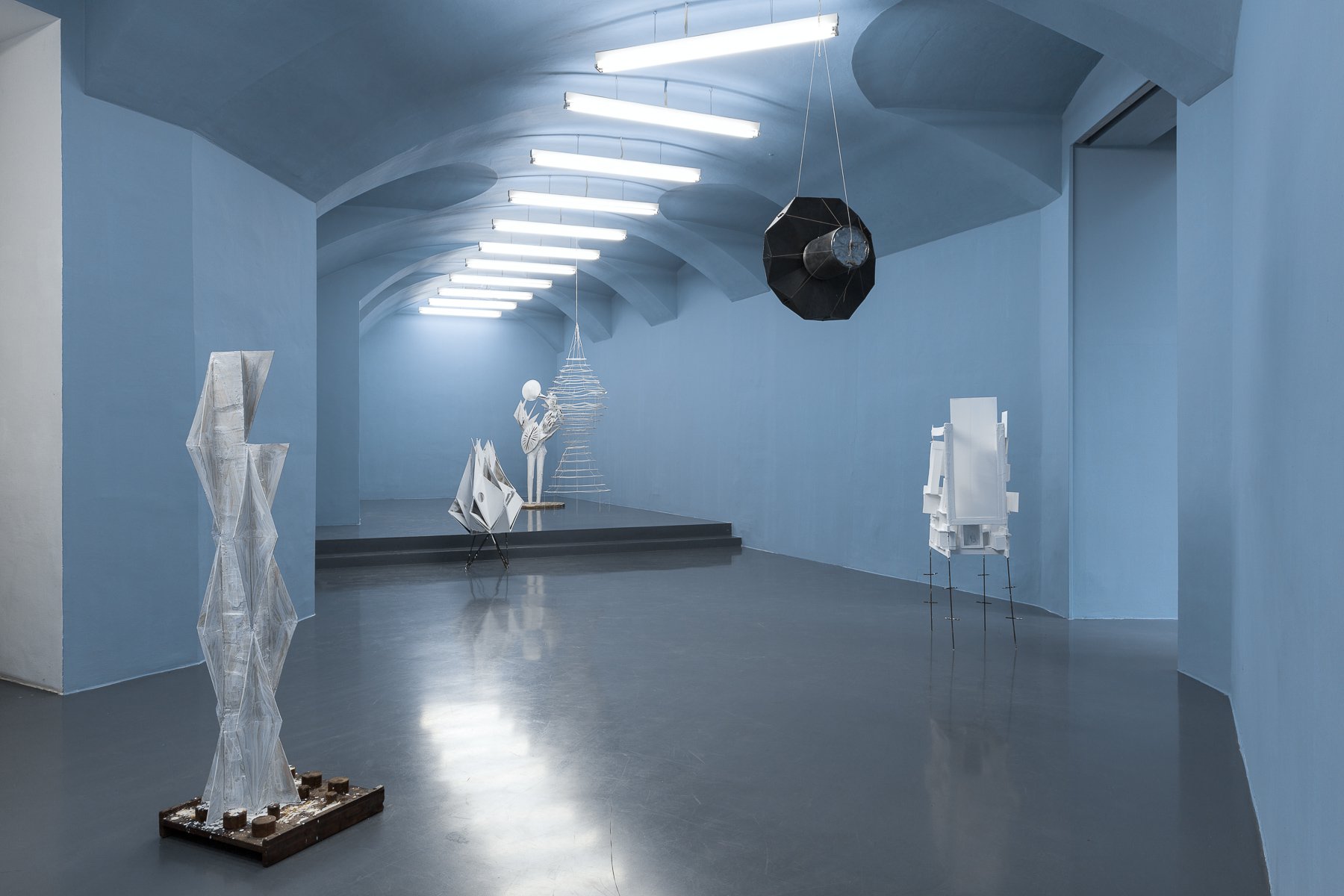
Tillman Kaiser
Harmolodic Substi, 2020
Installation view
Layr Seilerstaette, Vienna
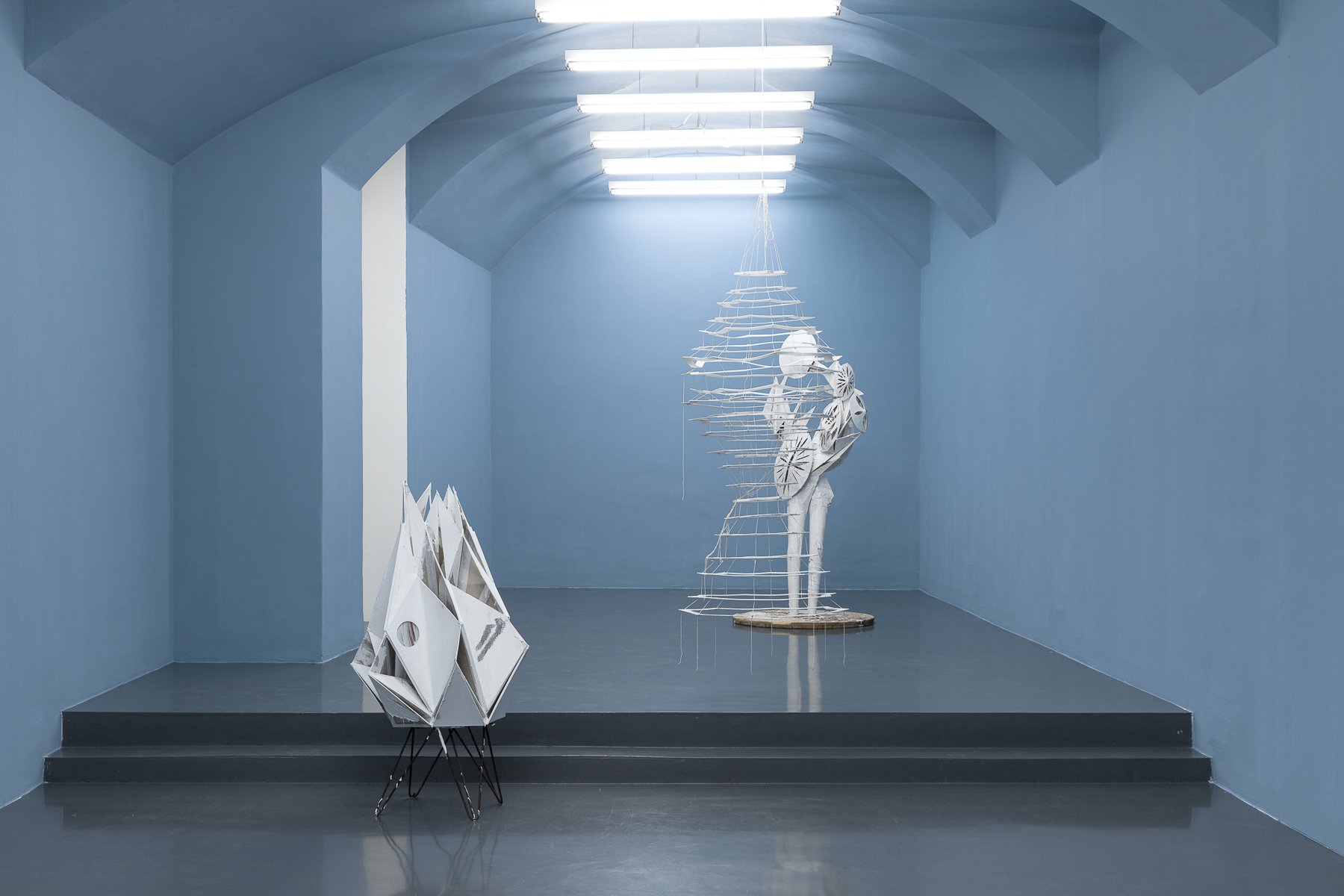
Tillman Kaiser
Harmolodic Substi, 2020
Installation view
Layr Seilerstaette, Vienna
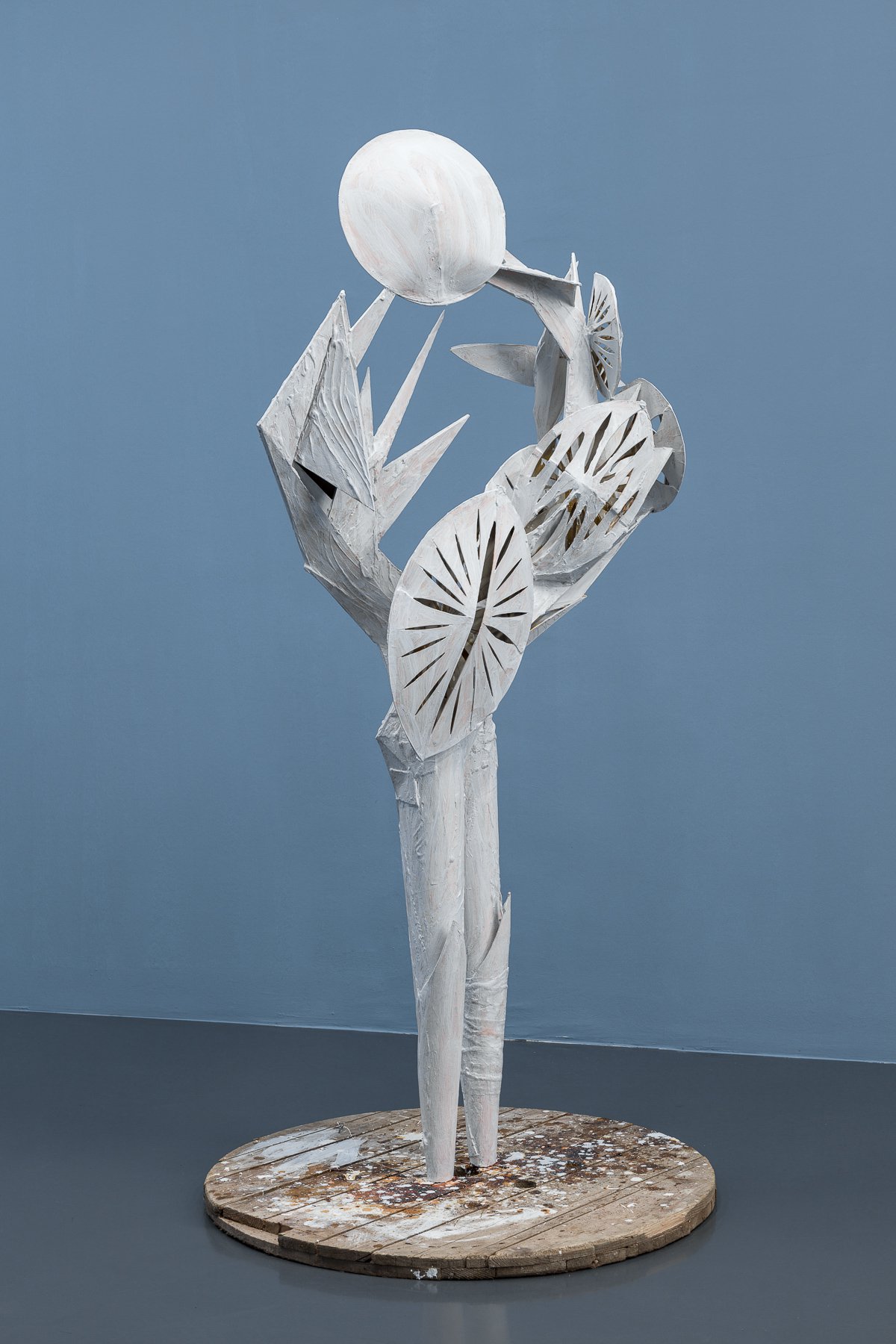
Tillman Kaiser
Erwägung verschiedener Möglichkeiten, 2020
Cardboard, plaster, wood, oil paint, shellac
205 × 100 × 100 cm
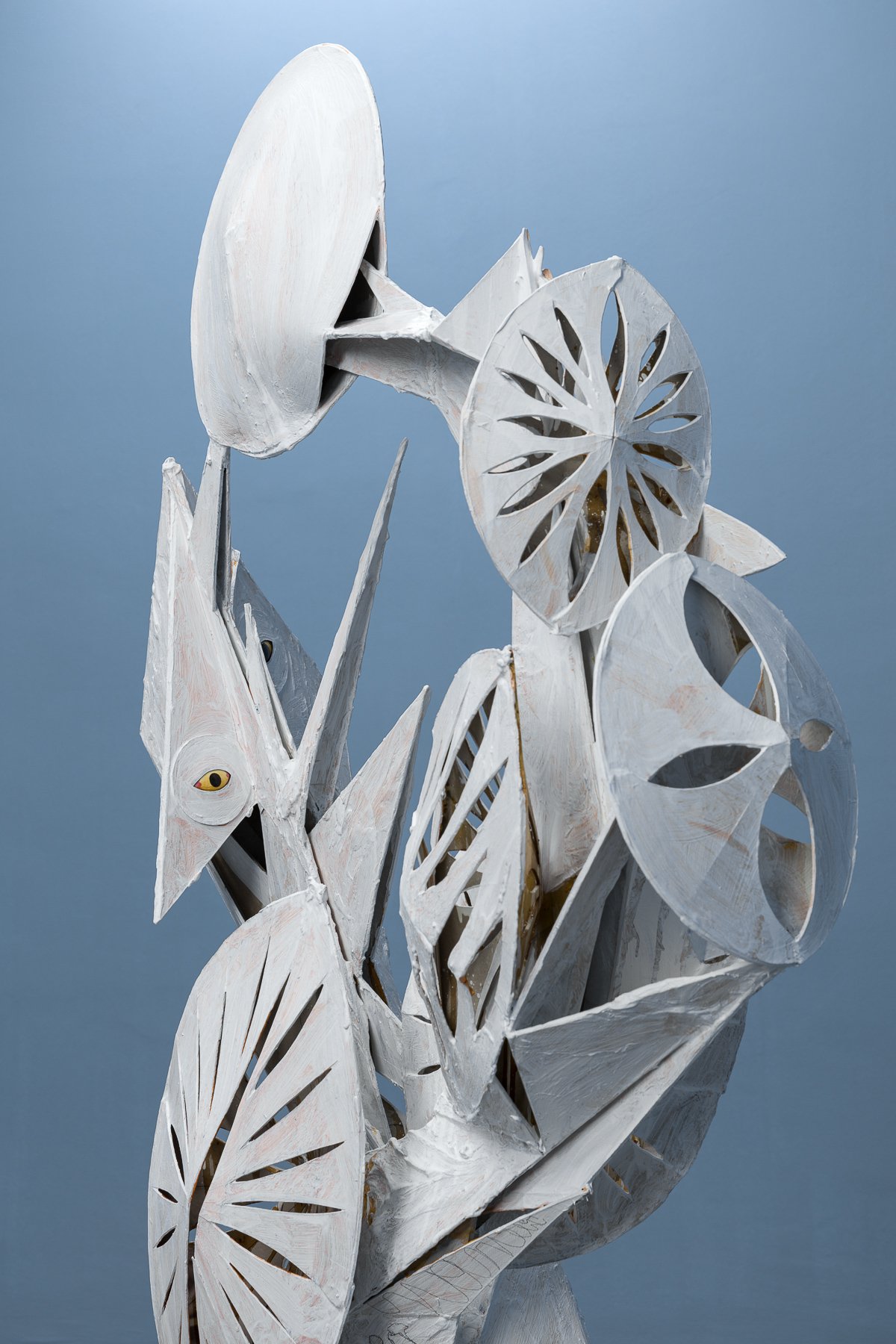
Tillman Kaiser
Erwägung verschiedener Möglichkeiten, 2020
Cardboard, plaster, wood, oil paint, shellac
205 × 100 × 100 cm
Detail view
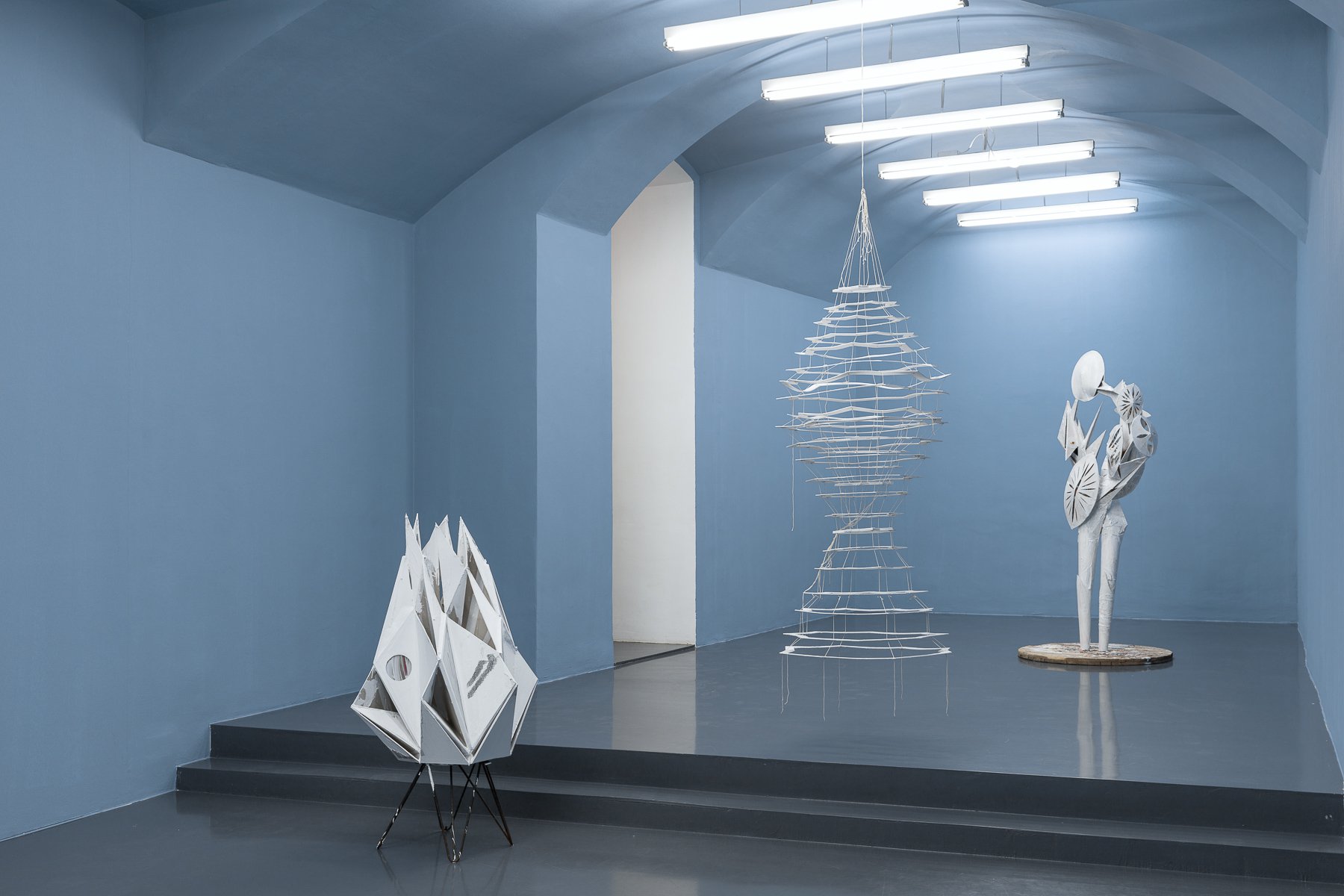
Tillman Kaiser
Harmolodic Substi, 2020
Installation view
Layr Seilerstaette, Vienna
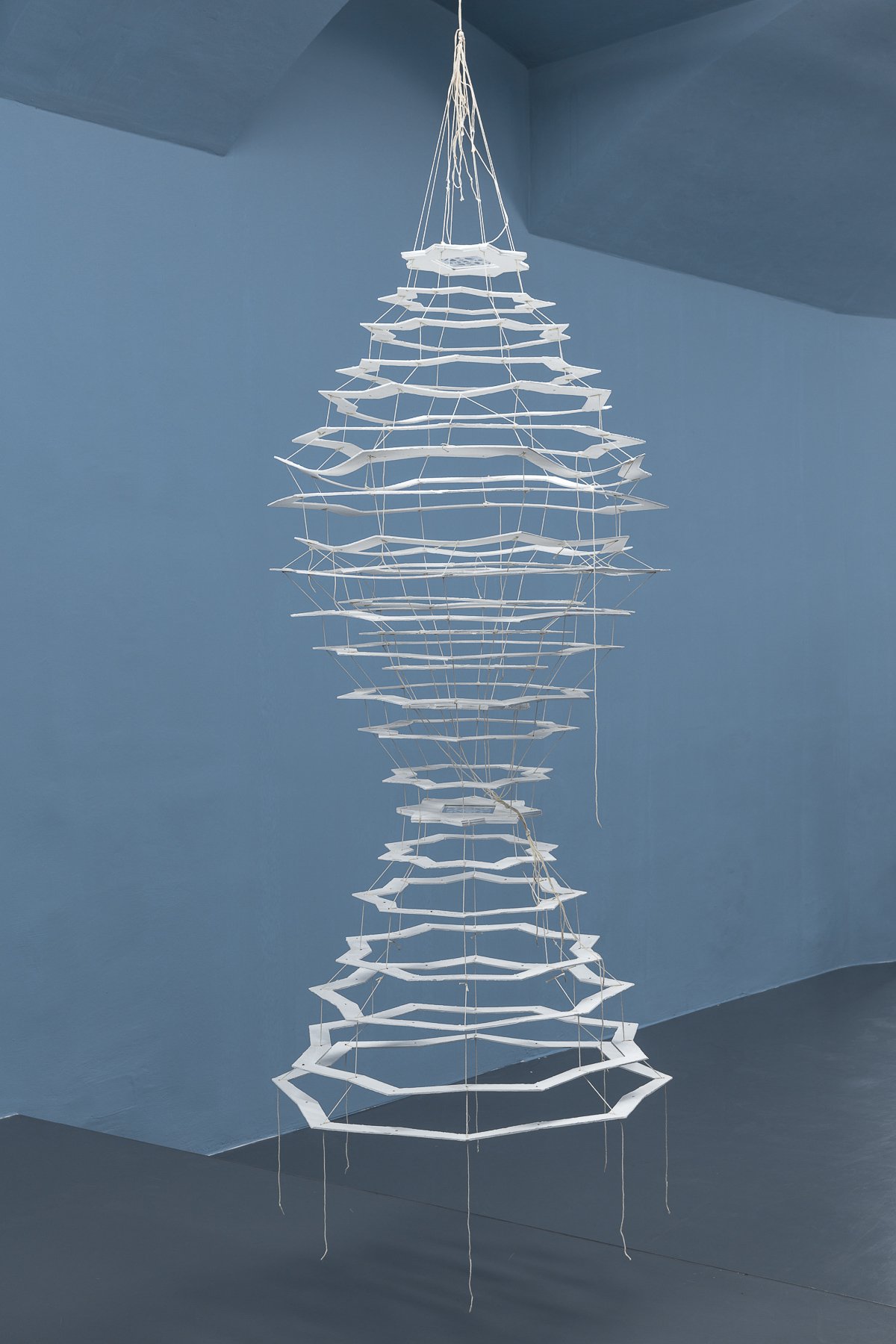
Tillman Kaiser
Orgelfuß, 2020
Cardboard, glass, dispersion paint, cotton thread
230 × 82 × 82 cm
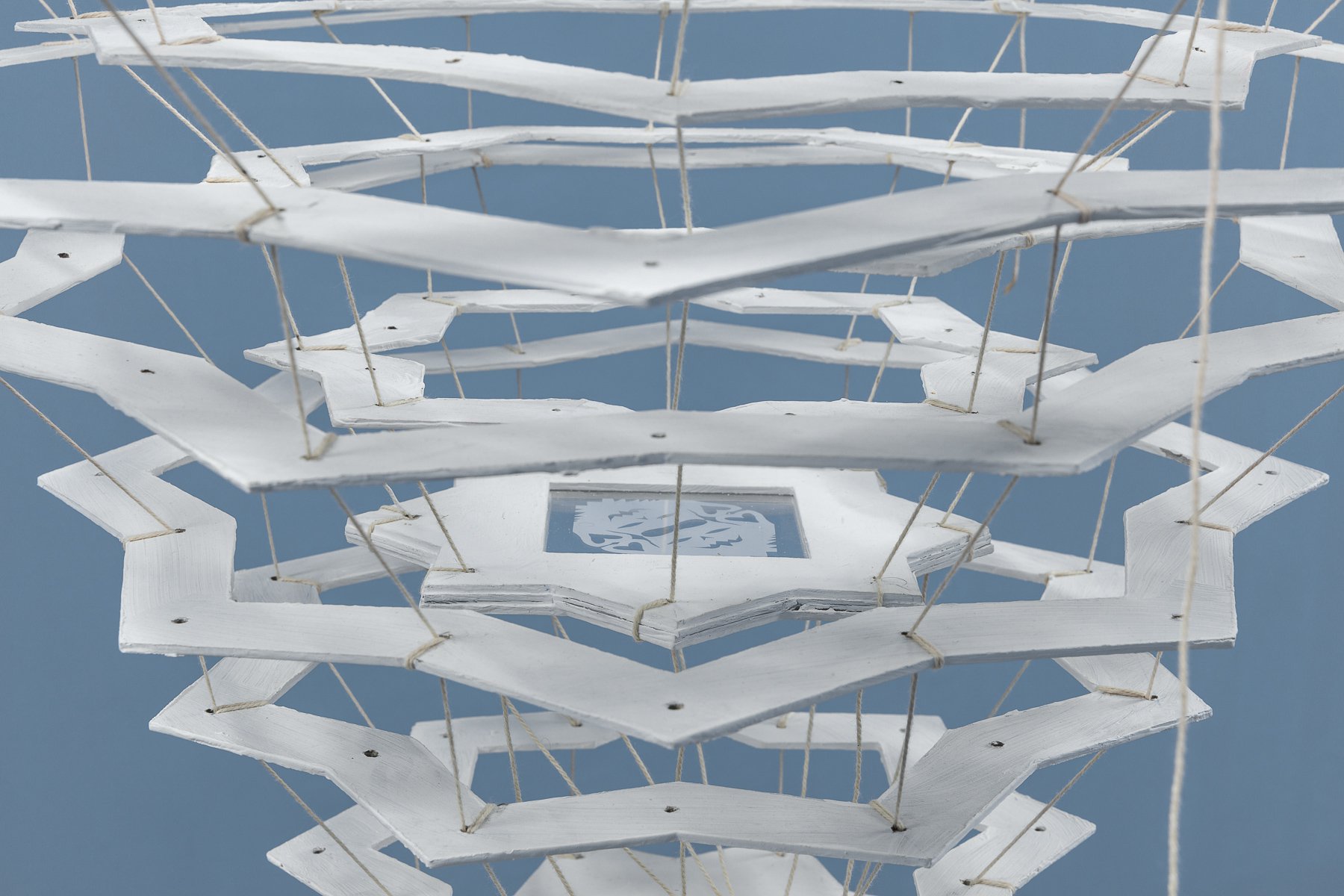
Tillman Kaiser
Orgelfuß, 2020
Cardboard, glass, dispersion paint, cotton thread
230 × 82 × 82 cm
Detail view
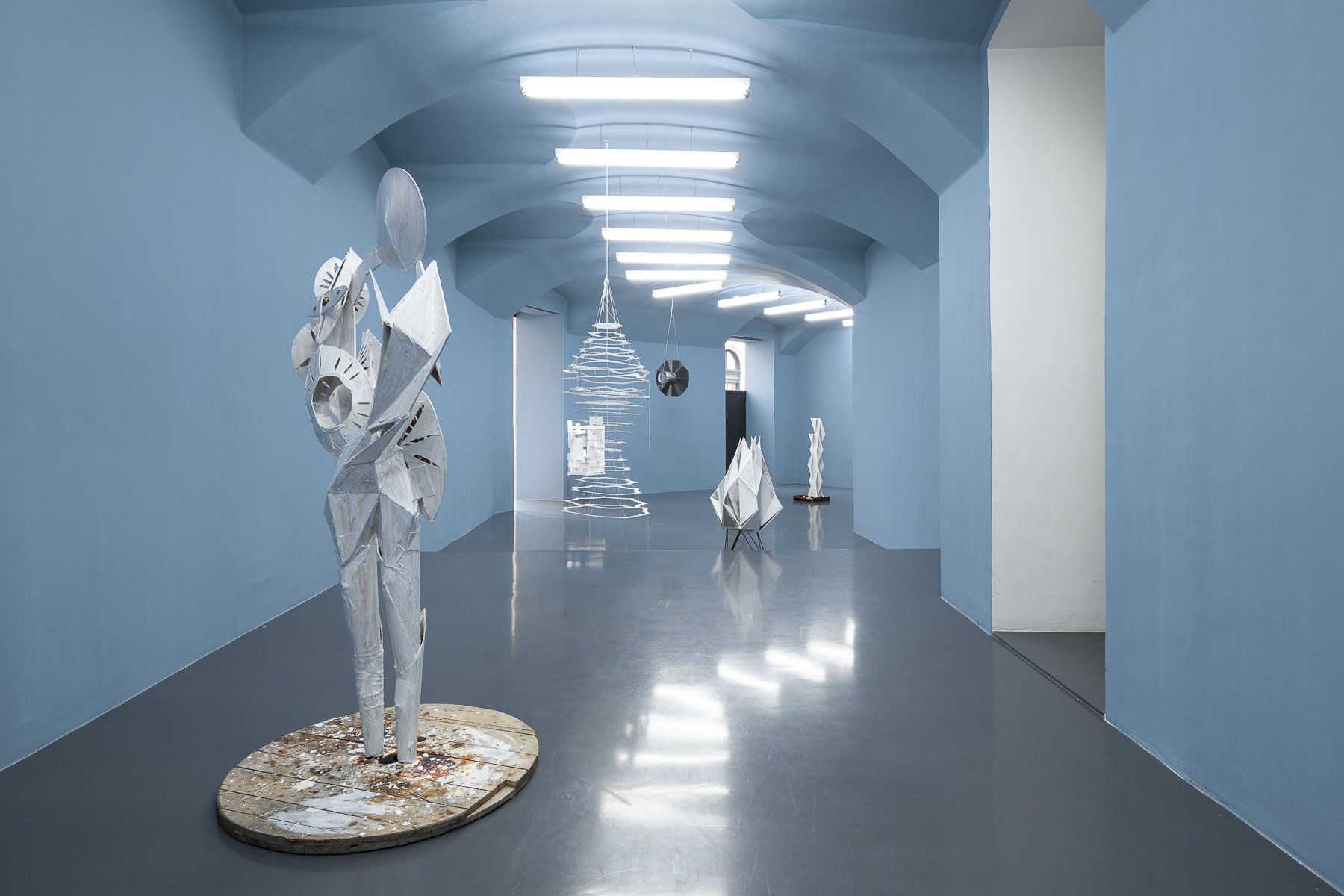
Tillman Kaiser
Harmolodic Substi, 2020
Installation view
Layr Seilerstaette, Vienna
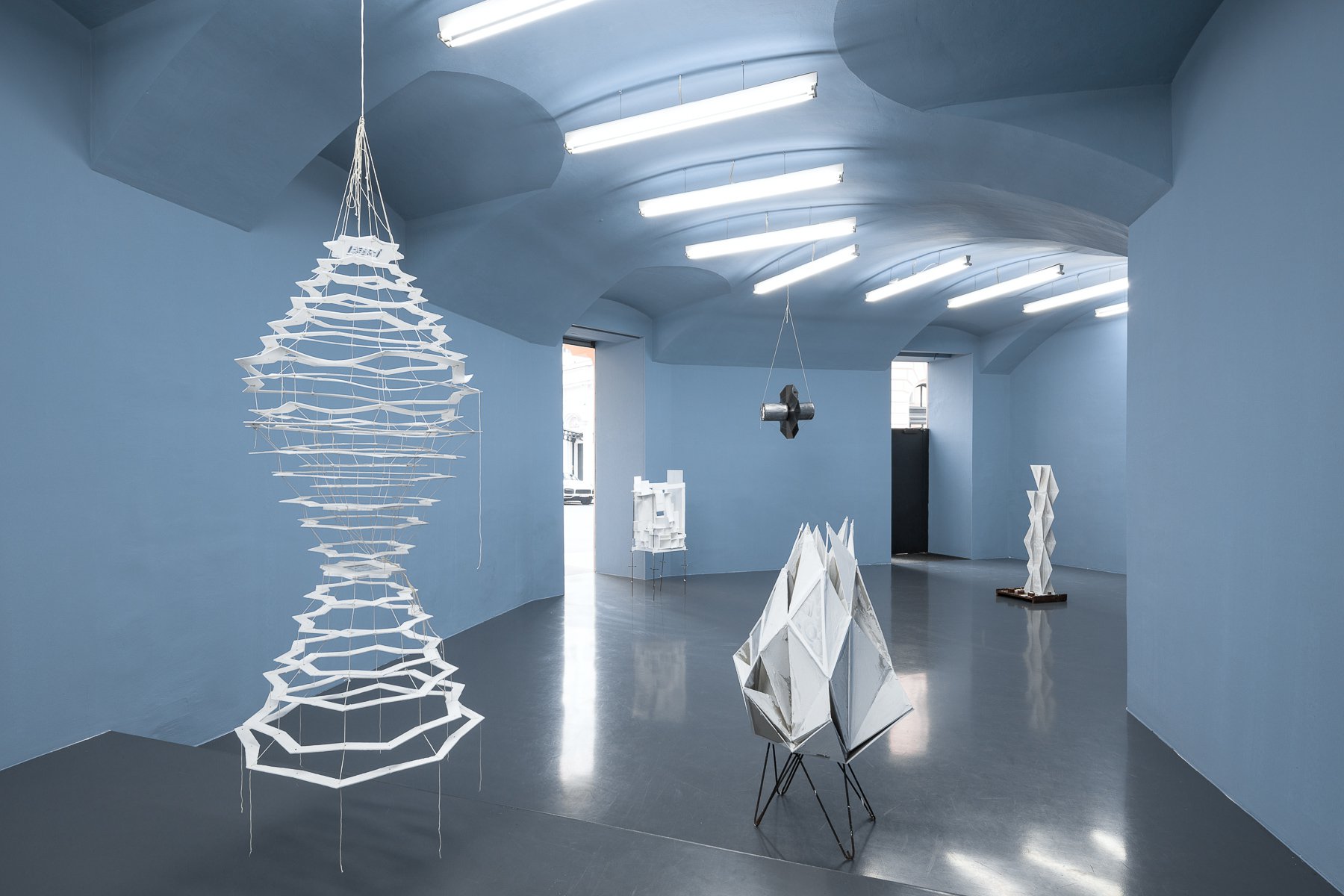
Tillman Kaiser
Harmolodic Substi, 2020
Installation view
Layr Seilerstaette, Vienna
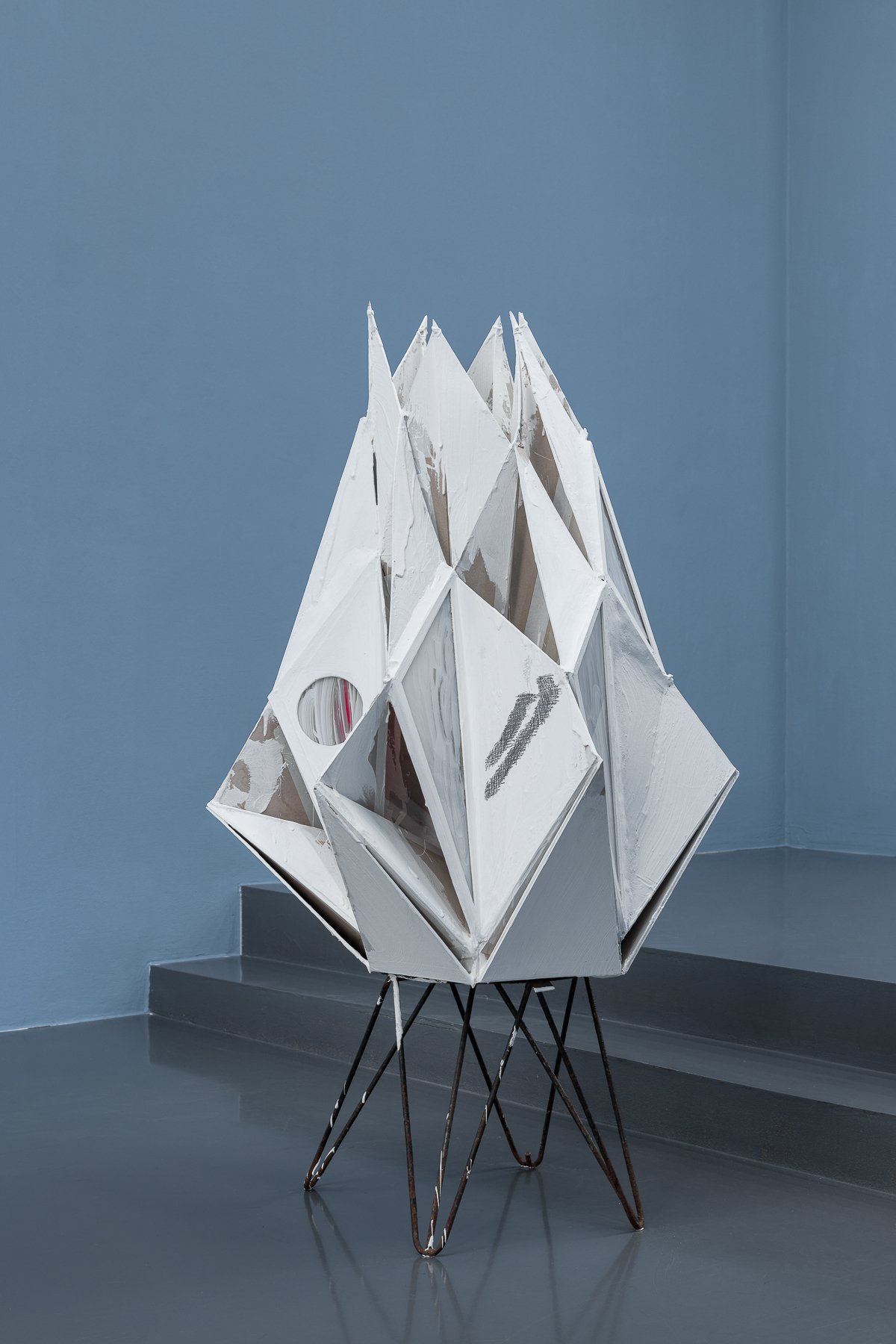
Tillman Kaiser
Oben Offen, 2020
Cardboard, glass, dispersion paint, cotton thread
230 × 82 × 82 cm

Tillman Kaiser
Revealing, 2020
Cardboard, plaster, oil paint, shellac, wood
157 × 50 × 50 cm

Tillman Kaiser
Harmolodic Substi, 2020
Installation view
Layr Seilerstaette, Vienna
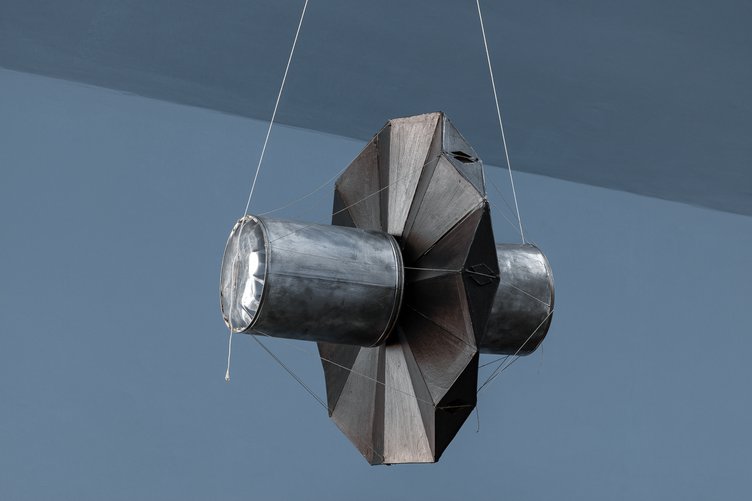
Tillman Kaiser
Vampier als Espressomaschine, 2005
Cardboard, tin plate
66 × 50 × 50 cm

Tillman Kaiser
Boxoffice, 2020
Cardboard, glass, metal, dispersion paint, oil paint
136 × 63 × 55 cm
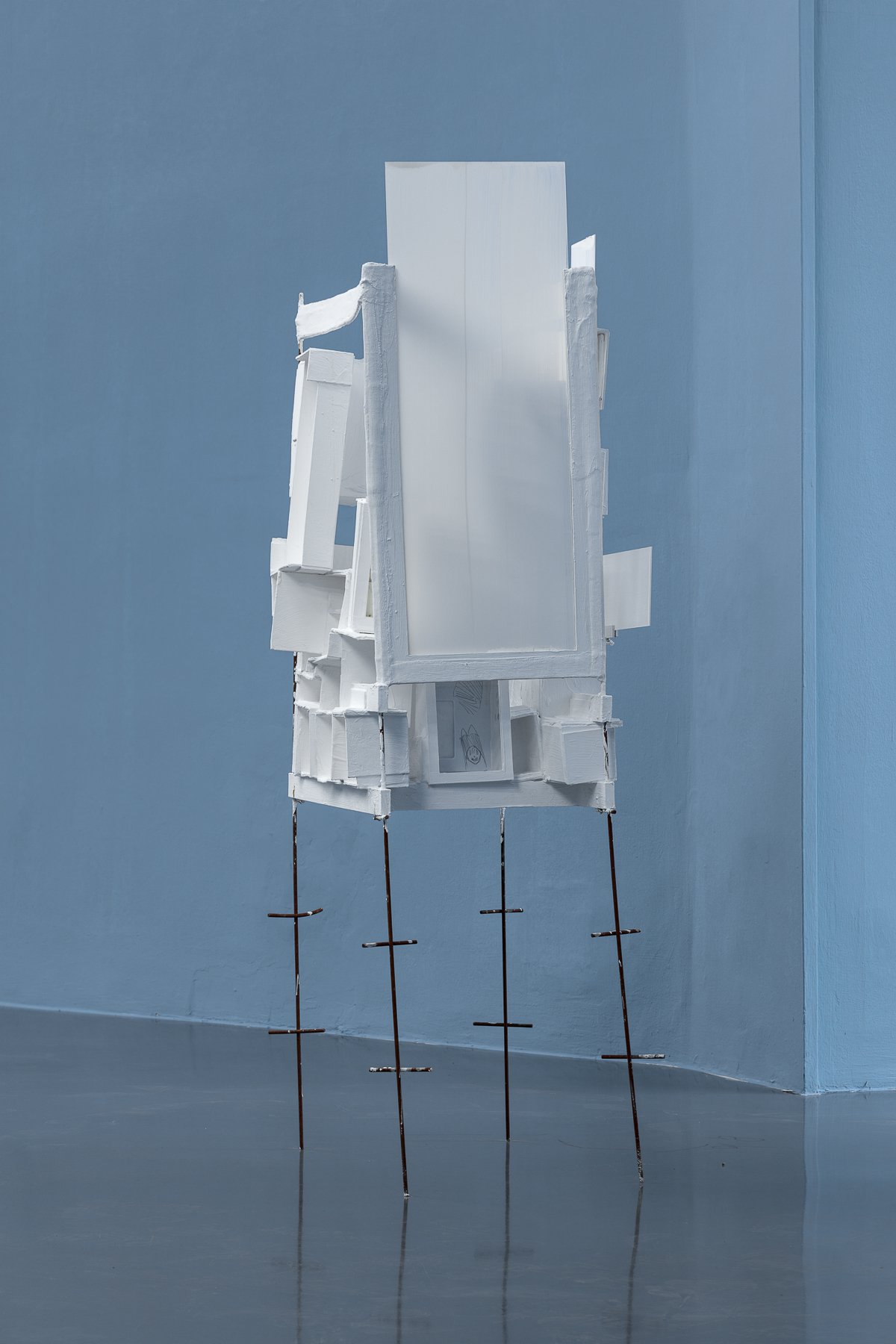
Tillman Kaiser
Boxoffice, 2020
Cardboard, glass, metal, dispersion paint, oil paint
136 × 63 × 55 cm
Photos: kunst-dokumentation.com
In der Ausstellung Harmolodic Substi zeigt Tillman Kaiser neue Werke, die alle aus dem gleichen Grundmaterial – bemaltem Karton – bestehen. Dennoch könnten sie in ihrem Verhältnis von Schwere und Leichtigkeit, von offener und geschlossener Form, Dynamik und Ruhe kaum unterschiedlicher sein. Gemeinsam verbinden sie sich zu einer vielstimmigen Raumkomposition, wobei der in RAL 5014 – Taubenblau – ausgemalte Galerieraum eine optische Klammer herstellt, die die Skulpturen mit den Räumlichkeiten verbindet. Kaisers fortlaufende Auseinandersetzung mit der menschlichen Gestalt und ihrem Verhältnis zu Raum und Architektur liegt den Arbeiten dabei ebenso zugrunde wie seine intensive Beschäftigung mit Struktur und Komposition, die wiederum in einem engem Bezug zu verwandten Fragestellungen in der Musik steht. Mit dem Ausstellungstitel bezieht er sich auf Harmolodics, die vom US-amerikanischen Jazzmusiker Ornette Coleman entwickelte Kompositions- und Improvisationsmethode, die auf einen unmittelbaren und offenen Ausdruck in der Musik abzielt und Harmonie, Melodie und Rhythmus als gleichwertige Elemente behandelt.
Aus vorwiegend dreieckigen Kartonelementen und einigen Glasplatten konstruiert, entwickelt sich eine Skulptur auf schwarzen Haarnadelbeinen stehend zu einer Art gigantischer Blütenknospe. Sie ist großzügig und flüchtig mit weißer Ölfarbe bemalt. Die Glasscheiben fungieren dabei als Referenz an die religiös-volkstümliche Praxis der Hinterglasmalerei. Eine andere, auf einem achteckigen Stern basierende Hängeskulptur ist von einem architektonischem Detail aus dem Wiener Stephansdom inspiriert: dem Sternenkranz am Orgelfuß über der Büste des Dombaumeisters Pilgram. Die fragile Form wiederholt Kaiser durch die in die Skulptur eingearbeiteten Scherenschnitte seines Sohnes. Die aus ineinandergesteckten Kartondreiecken regelmäßig in die Höhe wachsende stelenförmige Skulptur ist hingegen ein Fundstück aus einer ehemaligen Autofabrik. In eine weitere modulare Skulptur aus in- und übereinander gestapelten Kuben hat der Künstler Kinderzeichnungen integriert. Am unmittelbarsten der menschlichen Gestalt verpflichtet ist eine sich über zwei Beinsäulen erhebende komplexe Formation, die aus früheren Arbeiten bekannte Motive wie Masken oder Augen wiederbringt. Den Kontrapunkt zu diesen neuen, fast ganz in weiß gehaltenen Werken bildet die Arbeit Vampir (2005), eine hängende Skulptur, konstruiert aus zwei silberfarbenen Metalldosen und einem schwarz bemalten geometrischen Körper aus Karton.
Dass Kaisers Skulpturen häufig den vorläufigen Charakter von Modellen oder Prototypen haben, mag daran liegen, dass der Künstler die Spuren seines Arbeitsprozesses sichtbar lässt und nichts verschleiert: Die einzelnen Teile sind entweder geklebt oder mit Metallklammern verbunden und meist mit Ölfarbe bemalt. Zufall und Plan, Konzeption und Improvisation treffen in seinen Arbeiten aufeinander. Durch die Einbeziehung von Alltagsgegenständen und Fundstücken verbindet er unterschiedliche Lebensbereiche und unterwandert Hierarchien. Auf unprätentiöse Weise treffen Kunst und Leben in seinen Arbeiten aufeinander, wenn er Zeichnungen und ähnliche kreative Erzeugnisse seiner Kinder wie selbstverständlich in die Arbeit einfließen lässt.
Bettina Spörr
In the exhibition Harmolodic Substi, Tillman Kaiser presents new works that are all composed of the same base material – painted cardboard. Yet they could scarcely be more different in their relationship between gravity and weightlessness, open and enclosed form, dynamism and tranquility. Collectively they combine to form a polyphonic spatial composition, while the gallery space painted in RAL 5014 – dove blue – creates an optical bracket connecting the sculptures with the rooms. Informing the work is Kaiser’s ongoing engagement with the human figure and its relationship to space and architecture, along with his intensive preoccupation with structure and composition, which in turn correlate to corresponding issues in music. The exhibition title refers to Harmolodics, the compositional and improvisational method developed by American jazz musician Ornette Coleman, which strives for immediate and open expression in music and treats harmony, melody and rhythm as equal elements.
A sculpture standing on black hairpin legs, constructed predominantly out of triangular cardboard elements and a few glass plates, unfolds into a kind of gigantic flower bud. It is generously and haphazardly coated in white oil paint. The glass panels serve as a reference to the religious and folkloristic practice of reverse glass painting. A hanging work based on an octagonal star is inspired by an architectural detail from St. Stephen’s Cathedral in Vienna: the ring of stars at the base of the organ above the bust of master builder Pilgram. Kaiser repeats this fragile form by incorporating paper cutouts made by his son, whereas the column-shaped sculpture made out of interlocking, evenly ascending cardboard triangles is something he found in a former car factory. Another modular piece made of cubes stacked inside and on top of one another have children’s drawings embedded. A complex formation rising up from two leg-like columns is the most humanoid, echoing familiar motifs from earlier works such as masks or eyes. Offering a counterpoint to these new, almost entirely white works is Vampir (2005), a hanging sculpture made out of two silver metal cans and a geometric cardboard body painted black.
The fact that the artist does not conceal anything and leaves traces of his working process visible often lend Kaiser’s sculptures the provisional quality of models or prototypes: components are joined with glue or metal clamps, usually coated in oil paint. Chance and plan, design and improvisation intersect in his works. By incorporating everyday items and found objects he connects different spheres of life and subverts hierarchies. Art and life collide unpretentiously in his practice, as his children’s drawings and other creative output flow seamlessly through his works.
Bettina Spörr